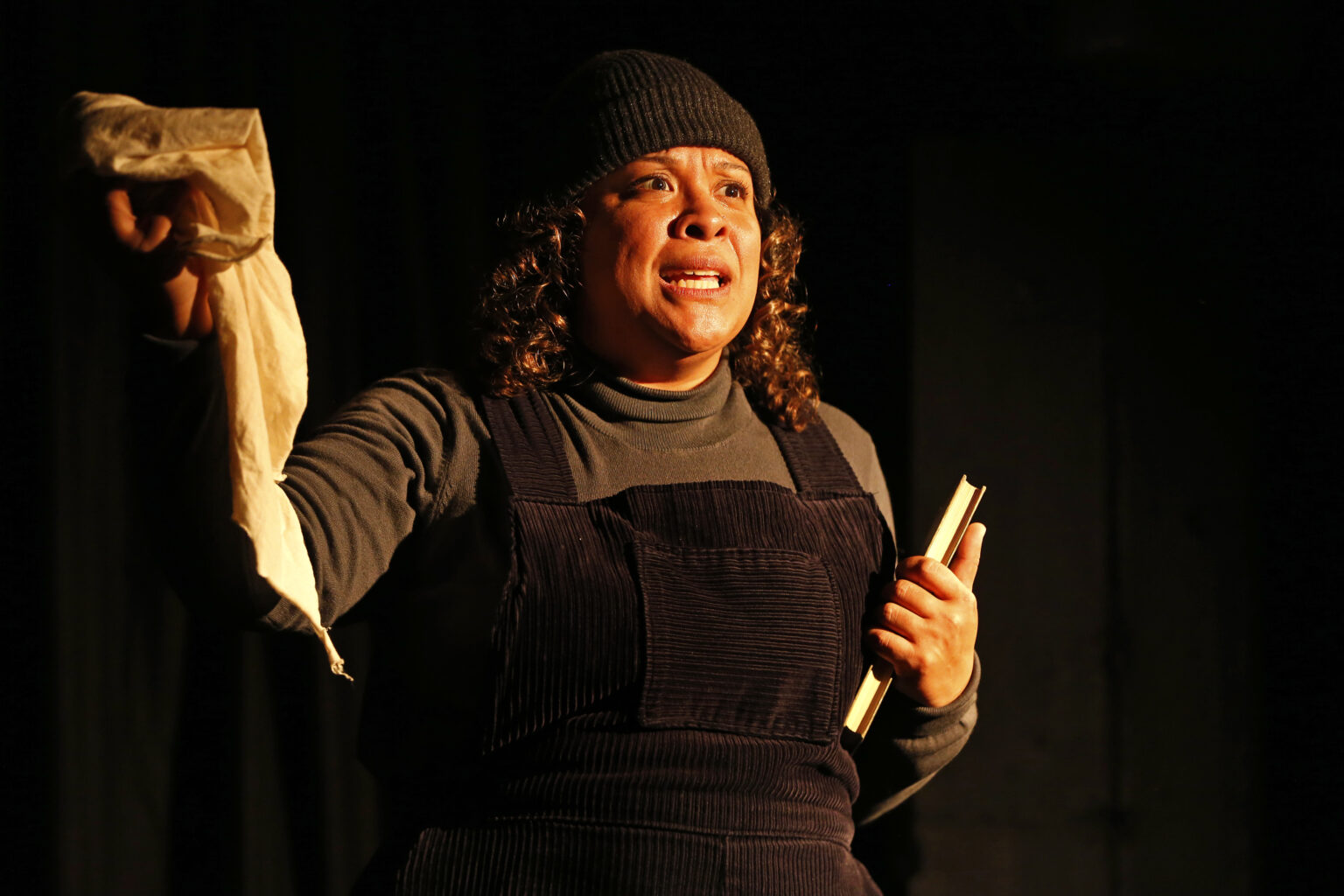By David Mann
Iman Isaacs moves across the stage like driftwood in a slow, dark ocean. There is a low, ambient drone, and a world drenched in deep blue light. There is poetry, prose. The smell of salt. Fish sizzling away in butter. Listen: Seagulls float above and waves lap the rocks below. Isaacs raises her hands. They twist and turn in the light. It is a slow and surreal moment, enormous and ethereal.
In What Falling Feels Like, Isaacs plays the parts of Samuel and Benjamin who live at the edge of the world in a small house perched precariously on the cliffside, overlooking the sea. Directed by Nikki Pilkington in consultation with Maude Sandham, the play draws its narrative inspiration from the South African author Karen Jennings’ allegorical novel An Island.
This is a play that leads with its emotional states, drawn from a rich and romantic text penned by Joe Young, who also co-produced the work with Pilkington. It is a story of labour, loneliness, great burden and a profound sense of longing. Isaacs holds all of these emotions and conditions. She is the low, heavy presence of Samuel and the fragile yearning of Benjamin. At her best, she is the great, symbolic weightlessness of the albatross – “Teach me how to be weightless. What it’s like to live with nothing,” she says, sailing, flying, falling, performing somersaults in our hearts.
What Falling Feels Like is live storytelling at its best. The world created by Pilkington, and team, is a deeply evocative and immersive one. From the honeyed yellows and deep blues of the lighting design, to the simple, but shrewd set – tables become beds, stages, and even fold-out, table-top theatre devices. Everything is exactly where it should be.
Sound design by Geoffrey Diver is also essential to the work. Here, sound does not influence or overpower emotion. Rather, it co-authors the experience along with Isaacs, working to build upon and enhance the emotional tone and quality of each moment.
It is almost too effective. Not 20 minutes in and people are already in tears, and this is more or less how it goes for the rest of the show. The play has a great sense of stillness. It relishes in the quieter moments – and here there is room to breathe, to think, to cry and to feel. Isaacs holds these moments wide open, allowing us to freefall into the depths of the text, the staged still life.
But it’s not all relentless sentiments. The table anchors us. It is a place to return to – a stage within a stage. As a way of seeing, it becomes one of the primary tools for framing, zooming in, out, regaining perspective, and returning to focus.
Similarly, the simple, dreamlike props used by Isaacs – a kite, a make-shift puppet, a tin cup and a fishing net – are astonishingly effective in their ability to convey a sense of scale. Through them, we are moved to a place high above the world, soaring with the birds, and then we are back in the little house on the cliffside, watching a tired and solitary Benjamin toss and turn in his bed.
The end, signalled at the beginning, is no less profound, no less devastating. We are left in silence, darkness, to paraphrase their prose, with nothing but the pulse of a room full of people sharing the same breath. It is extraordinary.


